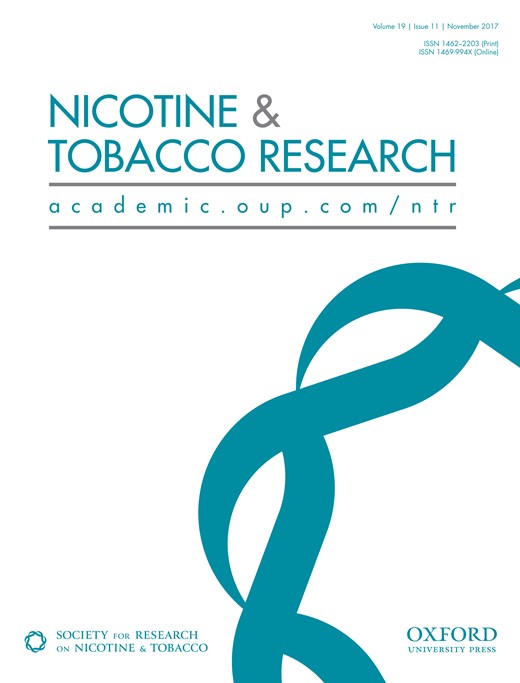-
Views
-
Cite
Cite
Hongying Dai, Jianqiang Hao, The Prevalence of Exposure to Workplace Secondhand Smoke in the United States: 2010 to 2015, Nicotine & Tobacco Research, Volume 19, Issue 11, November 2017, Pages 1300–1307, https://doi.org/10.1093/ntr/ntw306
Close - Share Icon Share
Abstract
To compare changes in exposure to workplace secondhand smoke (SHS) by industry of employment and occupation from 2010 to 2015.
Data were collected from 2010 and 2015 National Health Interview Survey. Weighted estimates of the prevalence of exposure to workplace SHS among currently working nonsmokers in 2010 (n = 12 627) and 2015 (n = 16 399) were compared.
The prevalence of exposure to workplace SHS among currently working nonsmokers was 10.0% in 2015 and 9.5% in 2010. Exposure to workplace SHS is disproportionally high among male workers, young workers, non-Hispanic blacks, Hispanics, workers with low education and low income, and workers residing in the Southern United States. Tobacco control policies have effectively reduced exposure to workplace SHS in a few white-collar and service job categories but blue-collar workers remain to have a high prevalence of exposure to workplace SHS. From 2010 to 2015, “transportation and warehousing industries” had the largest increase in SHS exposure (13.3%–21.5%, p value = .004) and “arts, entertainment, and recreation industries” had the largest decline in prevalence of exposure to SHS (20.1%–11.5%, p value = .01). In the multivariate analysis, workers with service (aOR = 1.4, p < .0001) and blue-collar occupations (aOR = 2.5, p < .0001) had a significantly higher prevalence of exposure to workplace SHS than those with white-collar occupations.
Disparities of SHS exposure by industry, occupation, and social demographic class continue to exist. Blue-collar workers, especially those working in “transportation and construction industries,” along with young workers and workers in high risk social classes are priority groups for future workplace SHS prevention.
An estimated 12.6 million working nonsmokers were regularly exposed to SHS at work in 2015. We compared the changes in prevalence of exposure to workplace SHS from 2010 to 2015 by social demographic class, industry of employment and occupation. Our findings could help inform the policymakers and health practitioners to establish stronger smoke-free air laws and conduct education campaigns to reduce the exposure to workplace SHS, especially among certain industries and occupations with a disproportionally high prevalence of exposure to workplace SHS.






Comments